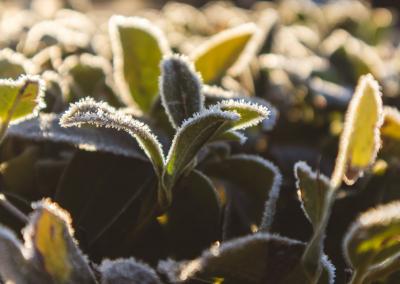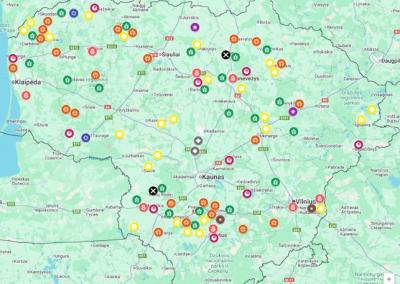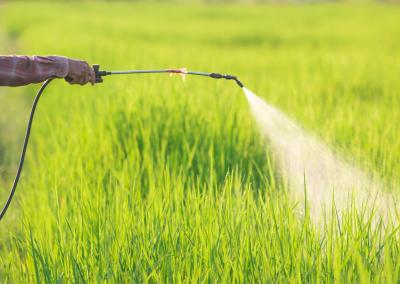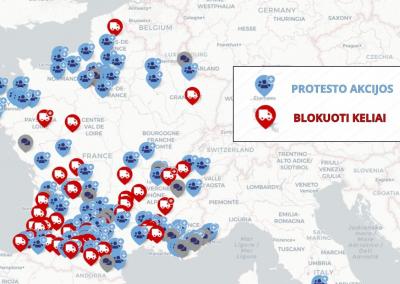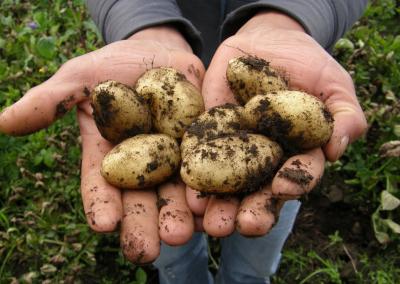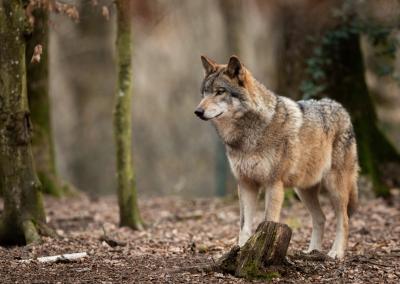Pollen tells the story of dinosaurs and helps solve crimes
„Some pollen and spores are more than 100 million years old, allowing scientists to reconstruct ancient climates, understand the natural causes of climate change and predict changes. At the same time, they tell more than just Earth's history; pollen from ancient human settlements even provides information about ancient people's eating habits, lifestyles and cultural changes," says Alma Grigienė, a geologist with the Lithuanian Geological Survey.
As Alma Grigienė points out, geology is not just about mountains, rocks and gems! It is the study of the origin, evolution, structure and processes of the Earth, both in the deep and on the surface. Stratigraphy, a branch of geology, studies the layers of the Earth's crust: their composition, conditions and sequence of layering It also classifies stratigraphic units (stratons) and helps us to understand the stages of Earth's development. Each straton is unique, for example, it may be made up of sand, clay, dolomite, limestone, chalk or peat. Geologists study these strata and read the Earth's history like a book, with each stratum – a chapter of its own.
Pollen – witnesses to climate historyOne of the methods – palynology (or the study of spores and pollen) – allows geologists and other scientists to learn about ancient ecosystems, climate and human impact on the environment. By studying microscopic pollen and spores, which persist for very long periods in marine, lake sediments, peat bogs and soils, it is possible to reconstruct ancient climates (palaeoclimates) and understand the natural causes of climate change. This is important for predicting future climate change.
Geologists use these unique microscopic footprints to reveal what plants grew in a place thousands or even millions of years ago, and the conditions under which sediments and deposits were formed. For example, the abundance of birch lichen and honeysuckle pollen indicates a cold climate, while the pollen of heat-loving plants indicates a warm and humid climate.
„When studying pollen, it is important to consider its size and how far it is carried by the wind – trees produce much more pollen than grasses, and spruce and pine pollen are carried farther by the wind. If the spectra show a lot of pollen from herbaceous plants – the areas were treeless. Each pollen – a time capsule unlocking the secrets of Earth's past ecosystems and climate“, – the geologist is convinced.Restoring the environment after disastersPollen surveys are also important for understanding how ecosystems have recovered after natural disasters or climate change. They are widely used in pre-Pleistocene and Pleistocene stratigraphy to determine the age of glacial and interglacial sediments and deposits and to reconstruct climate conditions. During the Pleistocene, the climate changed many times, with glaciers sliding and thick ice covering the area during the glacial years. During the interglacial years, the glaciers melted and vegetation flourished. At the beginning of the interglacial, tundra plants dominated, at the optimum – forests, and at the end – tundra plants again. Each interglacial is characterised by a specific change in forest plant species. Short-term warming periods, known as interstadial periods, were characterised by tundra and subarctic forest vegetation.
Pollen from the time of the dinosaursPollen and spores from the main (preQuaternary) geological periods (Carboniferous, Permian, Triassic, Jurassic, Cretaceous, Palaeogene) are also studied by paleontologists, including the dinosaur era. However, it is often difficult to attribute pollen and spores from these periods to specific plants, as many of these plants are now extinct.
Archives of peatland and lake sediments
Pollen studies in peatlands or lakes allow geologists to reconstruct a long ecological and climatic history. Pollen remains unchanged in each layer, so it is possible to trace which plants dominated at different times and how the climate changed. For example, studying the sediments on the bottom of a lake can reveal how the climate has changed over the last 10,000 years.
Human footprints
Pollen surveys are widely used in archaeology to understand how and when human activities affected nature. Pollen from ancient human settlements helps us to know when people started to cut down forests, sow crops and cultivate other crops, and at the same time change the landscape.
Research and medical applications of pollen in trees
Palinologists are also studying airborne pollen. These are collected by special traps and their concentrations calculated. Allergies are more likely to occur in sunny weather, as more pollen flies around then. Pollen from brassicas (e.g., buttercup, ericaceous, dogwood) is the most common allergen, while pollen from trees (including alder pollen) is much less common.
Importance in beekeeping
Since pollen is the main food of bees, it has started to be studied in honey. The pollen in honey is used to identify the plants from which the honey is produced. Honey is classified according to which pollen is found in the most abundant pollen.
Trial palynology
An interesting offshoot of this field is forensic palynology, where pollen is used in criminal cases. Pollen is very fine and light, so it can be found on clothes, shoes or even cars. As each location has its own unique pollen signature, it can be used to identify a crime scene or to confirm a person's presence in a particular location.
























